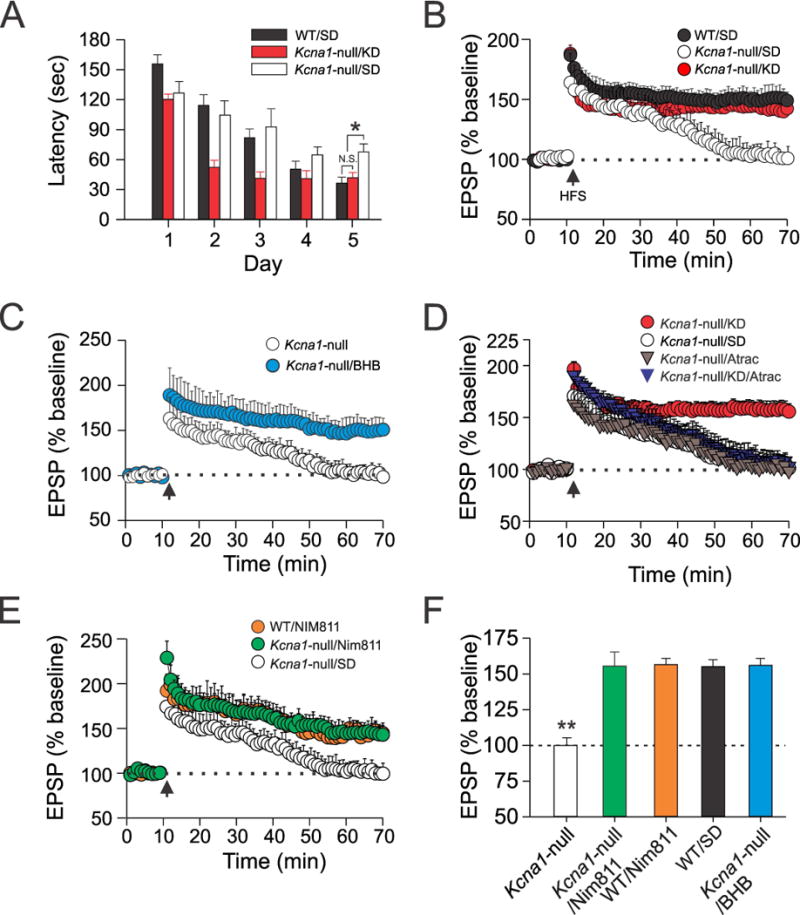Figure 4.

The KD and KB induce nootropic (cognitive-enhancing) effects in epileptic brain. (A) Average time latencies for mice to find the escape chamber in the Barnes maze are summarized for three groups of mice: (1) wild-type (WT) mice fed a standard diet (SD); (2) Kcna1-null mice fed a SD; (3) Kcna1-null mice fed a KD. KD-treated Kcna1-null mice exhibited improved performance in the Barnes maze (as indicated by the shorter latencies) compared to Kcna1-null mice fed only a SD. Interestingly, Kcna1-null mice fed the KD performed as well or better than WT mice fed the SD. N=18–24 per group *, p<0.05. (B) Kcna1-null mice fed a KD exhibit restoration of LTP induction after a two-week treatment period (red circles; N=16 slices from 6 mice). Standard diet (SD)-fed Kcna1-null mice show impairment of LTP induction (open circles; N=13 slices from 6 mice) compared to WT mice fed regular rodent chow (black circles). (C) Chronic in vivo BHB administration for one week via osmotic mini-pumps results in restoration of intrinsically impaired hippocampal LTP in Kcna1-null mice (N=14 slices from 8 mice). (D) ATRAC treatment negates the protective effects of the KD on intrinsic impairment of CA1 hippocampal long-term potentiation (LTP) induced by high-frequency stimulation (HFS; 100 Hz, 1 sec) of Schaffer collaterals. ATRAC alone does not influence the EPSP amplitude after HFS in Kcna1-null mice. N=12–14 slices from 6–8 mice in each group. (E) NIM811 – similar to either the KD or beta-hydroxybutyrate (BHB) alone restores intrinsic impairment of hippocampal LTP (n=10–16 slices from 4–7 mice in each group). (F) Summary data of EPSP amplitudes 1 hour after LTP induction for various treatment groups. For all panels, data points and bars reflect the mean ± SEM. **, p<0.01.
